
A blog about how-to, internet, social-networks, windows, linux, blogging, tips and tricks.
07 February 2020
Apple fined $27 million in France for throttling old iPhones without telling users
France’s competition watchdog DGCCRF announced earlier today that Apple will pay a $27.4 million (€25 million) fine due to an iOS update that capped performance of aging devices. The company will also have to display a statement on its website for a month.
A couple of years ago, Apple released an iOS update (10.2.1 and 11.2) that introduced a new feature for older devices. If your battery is getting old, iOS would cap peak performances as your battery might not be able to handle quick peaks of power draw. The result of those peaks is that your iPhone might shut down abruptly.
While that feature is technically fine, Apple failed to inform users that it was capping performances on some devices. The company apologized and introduced a new software feature called “Battery Health”. It lets you check the maximum capacity of your battery and if your iPhone can reach peak performance.
And that’s the issue here. Many users may have noticed that their phone would get slower when they play a game for instance. But they didn’t know that replacing the battery would fix that. Some users may have bought new phones even though their existing phone was working fine.
France’s DGCCRF also notes that iPhone users can’t downgrade to a previous version of iOS, which means that iPhone users had no way to lift the performance capping feature. “Failing to inform consumers represented a misleading business practice using omission,” the French authority writes.
Apple accepted to settle by paying a €25 million fine and recognizing its wrongdoing with a statement on its website.
Read Full Article
How bees can keep the peace between elephants and humans | Lucy King
Imagine waking in the middle of the night to an elephant ripping the roof from your house in search of food. This is a reality in some communities in Africa where, as wild spaces shrink, people and elephants are competing for space and resources like never before. In this engaging talk, zoologist Lucy King shares her solution to the rising conflict: fences made from beehives that keep elephants at bay while also helping farmers establish new livelihoods.
Click the above link to download the TED talk.
Attempt to fold Motorola’s Razr 100,000 times doesn’t go great
The Galaxy Fold felt like an omen for a burgeoning category. The fascinating and promising product was plagued by broken review units that forced Samsung to go back to the drawing board with a reinforced model. But even that version ultimately ran into issues, as I can personally attest.
No doubt other companies readying their own devices took the opportunity to reconsider their strategy. Huawei, for one, very publicly noted that it would push back the release of the promising Mate X, just to be on the safe side. Perhaps it was the compelling form factor coupled with an assumed abundance of caution, but many no doubt expected the Razr’s arrival to be different.
Like clockwork, CNET was on the scene for the Razr’s arrival with the same folding machine it used to stress test the Galaxy Fold. While that device made it a bit over 100,000 folds, The Motorola Razr fell significantly short in testing this week. The original head “Motorola Razr fails to reach 100,000 folds in our test” doesn’t quite capture how short the device fell. The hinge started going wonky in a little over 27,000 folds. That’s just under four hours into the video — a pretty big gulf compared to the 14 hour marathon for the Fold.
Certainly one test shouldn’t be regarded as the end-all, be-all. The truth is, however, that in spite of the product currently being available for sale, there aren’t many review units out there. Of course, that seems reason enough to approach with caution, as it would with any first-gen product and new form factor. Those who did purchase the foldable have already taken to Twitter to complain about a loud hinge sound. Again, not a deal breaker, perhaps, but also not great.
This is the sound of the hinge on the Razr folding. It doesn’t sound good. The hinge also feels flimsy and cheap for a $1500 phone. The rep at this store said she was afraid to use it. pic.twitter.com/dCXZNlCF0P
— Max Weinbach (@MaxWinebach) February 2, 2020
I suspect the device will come with warnings about treating it with an abundance of caution, similar to the paperwork that started shipping with the Fold. But while the device is more affordable than the Fold, it’s still $1,500 — a big price to pay for something you need to hold with kid gloves. Follow this space to see how things play out in the coming weeks, but after a good deal of excitement following the original unveil, this probably isn’t the kind of press Motorola was banking on.
Meantime, can I interest you in a nice, $300 Moto G?
Read Full Article
Brilliant makes your smart home more manageable
Controlling your smart home gadgets from your phone or by voice isn’t exactly a chore, but after setting up a bunch of smart lights, a Wi-Fi lock, thermostat and a few more smart devices, I came to miss the ability to control at least some of them with a physical switch. Add to that the simple fact that your visitors suddenly don’t have a clue how to turn off the lights and you may just want to go back to basic light switches. Thankfully, that’s something the industry has realized, too, and we’re seeing a few more smart hardware controllers now, too.
At CES this year, Brilliant announced a new smart plug and switch to complement its existing touchscreen smart home controller. The new hardware is still a few weeks away, but ahead of the launch, I got a chance to try out the existing Brilliant controller, which has been on the market for a while but has received numerous updates and support for new integrations ever since. One of the latest integrations is with Schlage’s Encode Wi-Fi lock, which I also tested.
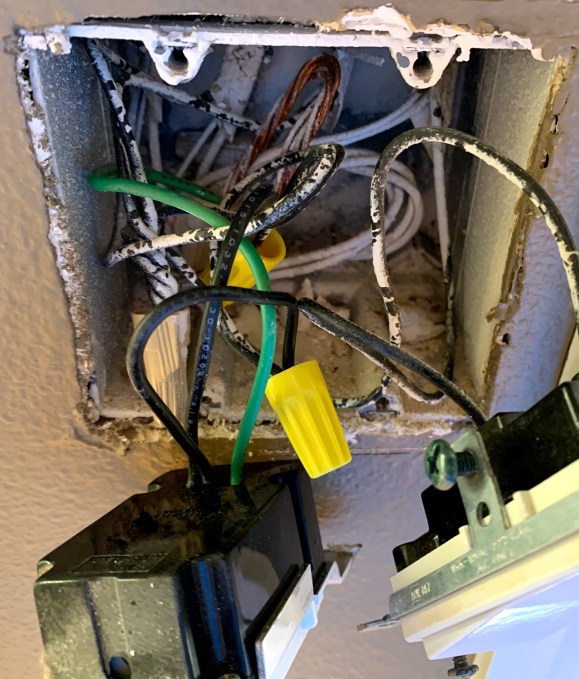 The promise of the Brilliant Controls is that you will be able to control all supported smart home gadgets from the physical and touchscreen controls — and, of course, it also turns the light switches you replace with it into smart switches. It also comes with a built-in camera (with a privacy shutter) that you can use either for room-to-room video chats or to check up on your home while you are away. The video quality isn’t great, but good enough for its intended purpose.
The promise of the Brilliant Controls is that you will be able to control all supported smart home gadgets from the physical and touchscreen controls — and, of course, it also turns the light switches you replace with it into smart switches. It also comes with a built-in camera (with a privacy shutter) that you can use either for room-to-room video chats or to check up on your home while you are away. The video quality isn’t great, but good enough for its intended purpose.
Supported devices include Wemo smart plugs, Ring alarms, Sonos speakers, Philips Hue and Lifx lights, as well Schlage, Yale and August locks, among others. The number of integrations keeps growing and covers most of the major brands, but if you’ve bet on other systems, this isn’t the controller for you. It also comes with built-in Alexa support and works with the Google Assistant, too.
Depending on how you feel about working with electricity in your home, the physical installation of the Brilliant Controls (I tested the $299 single and $349 dual switches) is either a breeze or will cause you nightmares. If you’ve ever changed a light switch, though, the installation couldn’t be easier, and Brilliant offers both an in-depth printed installation guide and video tutorials.
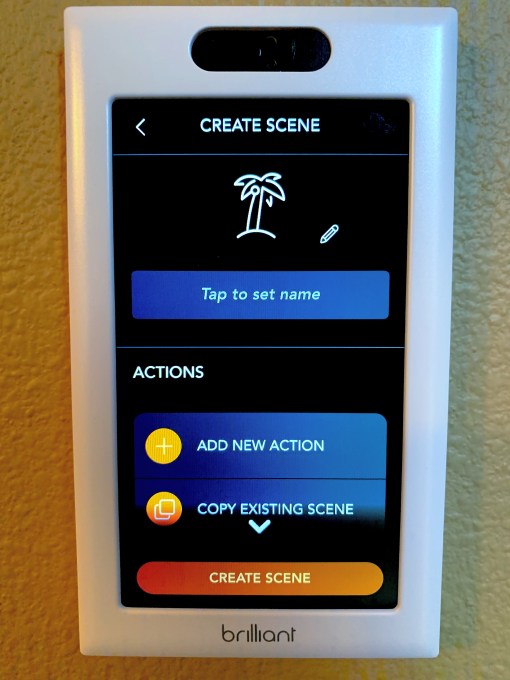 My own experience was pretty straightforward, assuming that your home’s electricity system is relatively modern and conforms to today’s standards. Installing the single switch took me about half an hour and the more complex dual switch was ready to go in about 45 minutes or so — and that was the first time I changed a light switch in a few years. If you’ve never done this before, though, that rats nest of cables behind your switches may take a little bit to figure out, but thankfully, all electric cables in modern homes should be color-coded.
My own experience was pretty straightforward, assuming that your home’s electricity system is relatively modern and conforms to today’s standards. Installing the single switch took me about half an hour and the more complex dual switch was ready to go in about 45 minutes or so — and that was the first time I changed a light switch in a few years. If you’ve never done this before, though, that rats nest of cables behind your switches may take a little bit to figure out, but thankfully, all electric cables in modern homes should be color-coded.
One nice feature here is that you first install the backplate, which has physical buttons to let you test your installation before you put on the actual touchscreen unit. That way, you don’t have to unscrew everything in case you did make a mistake.
As for the software side, once you put on the screen, the Android-based interface should pop up within a few minutes. From there, you go through the usual Wi-Fi setup procedure and most likely a software update. After that, you should be ready to go.
Managing the lights that are directly attached to the control from the touchscreen or the capacitive strips on the side (for the two-switch control and up) is easy enough. Adding your third-party devices to the system takes a little while, but isn’t too onerous either, and you’re only going to do it once, after all.
I found the overall menu system a bit confusing, though, and takes a while to navigate. That especially becomes a problem when you want to program scenes (maybe to turn on all the different smart lights in your living room or bedroom). For this, you have to program both a scene that turns on all the lights, which take a few taps for every single one — and then a second scene that turns them all off. Because you can duplicate scenes, that second step is a bit faster, but I couldn’t help but think that there had to be a better solution for this. At the same time, though, this allows you to create pretty complex scenes. You can do most of this through the Brilliant app on your phone, too, which is probably the way to go as it’s a bit easier and faster.
Once everything is set up, though, the system is actually incredibly easy to use, and even your house guests who have never seen a smart plug will finally be able to turn your lights on and off (and yes, I’m aware that this shouldn’t be a problem in 2020, but here we are). I know it’s a bit of a cliche, but it pretty much just works.
One problem I’ve had with Brilliant is that the Controls are pricey, starting at $299 for the single switch and $349 for the dual switch. At those prices, you’re not going to put those into a lot of your rooms (unless you think that’s not that pricey, in which case, congrats). With the upcoming screen-less dimmer switches, which only require you to have a single control in your home and will retail for just under $70, that equation changes. We’ll give those new switches a try once they are available later this year.
Read Full Article
Motorola embraces the stylus life on its budget G series
Motorola’s long been a kind of quiet workhorse on the mobile scene. Aside from the occasional razzle-dazzle of a Moto Z or Razr, the Lenovo subsidiary mostly trades in budget handsets. The G line is probably the best example of the bunch. The devices aren’t flashy and the specs are often a year or two old, but you can’t really argue with the sub-$300 price point.
To its credit, however, the brand does a solid job introducing compelling features into the mix, even while keeping the cost down. This morning, at an event in Chicago, Motorola introduced two new entries into the line: the Moto G Power and Moto G Stylus, which will run $300 and $250, respectively.
The devices are similar in a number of ways, including the addition of a macro lens, borrowed from last year’s Motorola One Macro. It’s a curious addition — one that certainly sets the device apart from a million other multi-camera systems. How handy a macro lens will be on a phone is another question entirely, of course — though the company is convinced that users will appreciate the option.
Certainly it will help mix up the photos they do shoot, moving from your standard shots of people and landscapes to flowers and food, I suppose.
Both products also sport beefy batteries — a longtime and welcome staple of Motorola’s devices. There’s a beefy 4,000 mAh battery on the Stylus and even more massive 5,000 mAh on the Power. Those are listed at 19 and 27 hours, respectively. Less impressive is the Snapdragon 665 processor found on each. It’s a cost-cutting measure, honestly.
There are, after all, trade-offs to keeping budget phones budget — and Qualcomm’s decision to go all in on 5G for the 765 is no doubt going to sting some budget device makers. On the positive side of things, the headphone jack is still clinging on for dear life.
The biggest distinction factor between the two is, of course, in the name. Nearly a decade after Samsung proved that the world (or parts of it, at least) still wanted a stylus, the technology never really went mainstream. Sure, plenty of companies have tried it, but none found anywhere near the success of the S-Pen.
Motorola takes a cautious leap here with the inclusion of a stylus and the Moto Note app (which it tells me has cleared all of the legal hurdles in spite of sounding quite similar to an existing product). Perhaps there’s room for the tech at a far lower price point.
Another feature worth noting (as it were) was also inherited by the Motorola One line. The clever dedicated action camera allows users to shoot wide screen while holding the phone portrait mode. That way you can move the phone around with a single hand while shooting action scenes.
Both devices start shipping this spring.
Read Full Article
Instagram prototypes letting IGTV creators monetize with ads
Instagram may finally let IGTV video makers earn money 18 months after launching the longer-form content hub. Instagram confirms to TechCrunch that it has internally prototyped an Instagram Partner Program that would let creators earn money by showing advertisements along with their videos. By giving creators a sustainable and hands-off way to generate earnings from IGTV, they might be inspired to bring more and higher quality content to the destination.
The program could potentially work similarly to Facebook Watch, where video producers earn a 55% cut of revenue from “Ad Breaks” inserted into the middle of their content. There’s no word on what the revenue split would be for IGTV, but since Facebook tends to run all its ads across all its apps via the same buying interfaces, it might stick with the 55% approach that lets its say creators get the majority of cash earned.

Previously, Instagram only worked with a limited set of celebrities, paying “to offset small production costs” for IGTV content Bloomberg reported, but not offering a way to earn a profit. That left creators to look to sponsored content or product placement to generate cash, or to try to push their followers to platforms like YouTube where they could earn a reliable cut of ads.
A lack of monetization may have contributed to the absence of great content on IGTV. Many of the videos on the Popular page are low-grade rips of YouTube content or TV, or are clickbaity teasers. That in turn has led to mediocre view counts, only 7 million of Instagram’s billion-plus users downloading the standalone IGTV app, and Instagram dropping the homescreen button for opening IGTV.
That’s all disappointing considering TIkTok is blowing up on the back of more purposeful, storyboarded mobile video entertainment. Instagram has been looking at other ways to boost the quality of content users see, including today’s launch unfollow suggestions.
But today, reverse engineering master and perennial TechCrunch tipster Jane Manchun Wong tipped us off to the IGTV monetization prototype she dug out of the code of Instagram’s Android app. She tells TechCrunch she first saw signs of the program a week and ago and was then able to generate screenshots of the unreleased feature. It shows an “Instagram Partner Program” with “Monetization Tools”. This seems to be different from the old “Partner Program” for business tool developers.
Users who are deemed “Eligible” according to criteria we don’t have info about could choose to “Monetize Your IGTV Videos”. The screen explains that “You can earn money by runing short ads on your IGTV videos. When you monetize on IGTV, you agree to follow the Partner Program Monetization Policies.”
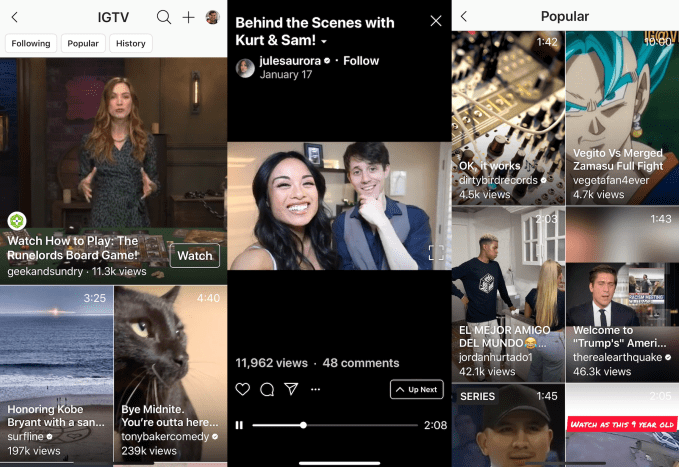
It’s not clear IGTV’s monetization policies would be different, but on Facebook, they require that users:
- Follow all its normal Community Standards about decency
- Share authentic content without misinformation, false news, clickbait, or sensationalism
- Share original content they made themselves
- Avoid restricted content categories including debated social issues, tragedy or conflict, objectionable activity, sexual or suggestive activity, strong language, explicit content, misleading medical information, and politics and government
Instagram confirmed to TechCrunch the authenticity of the prototype it’s been working on and provided the following statement “We continue to explore ways to help creators monetize with IGTV. We don’t have more details to share now, but we will as they develop further.” Given the company is confirming this as a prototype rather than a feature being beta tested, there are no public mentions, and that there’s no Instagram Help Center information published about it, Instagram might not be testing the program externally yet. There’s still a chance Instagram could change directions and never launch the monetization program or alter it entirely before any eventual launch.
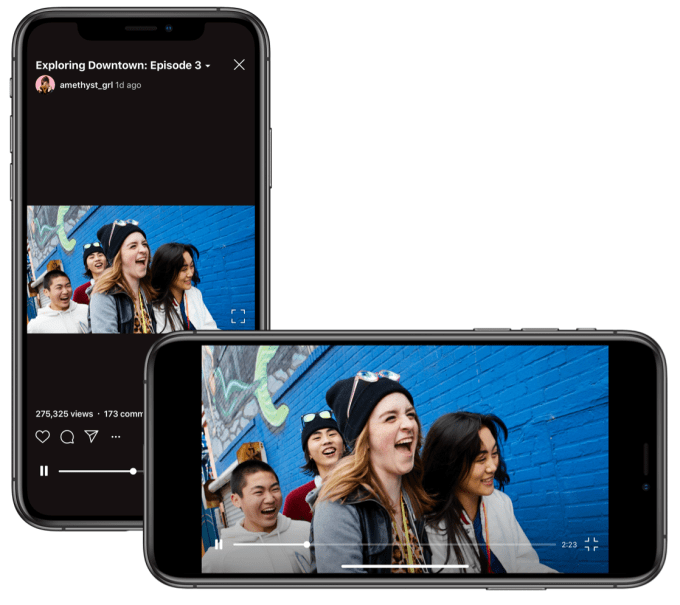
Creator monetization has been a slow-going evolution on many of the major social networks. While YouTube was early to the space with ads, it as well as Twitter, Facebook, and Snapchat are now testing an array of ways for influencers to earn money. Those include ads splits, subscriptions to exclusive content, tipping, connections to brands for sponsorship, merchandise sales, and more.
Bloomberg’s Sarah Frier and Nico Grant reported this week that Instagram brought in $20 billion in revenue during 2019. It gets to keep that revenue since it currently doesn’t split any with creators. That contrasts with YouTube, which says it took in $15.1 billion in 2019 revenue this week in the first time it’s revealed the stat, though it has to pay out a substantial portion to creators. With Instagram now running ads in feed, Explore, and Stories, only IGTV and Direct remain as major surfaces lacking ads.
Social apps are wising up that if they want to keep their creators from straying to competitors and bringing fans with them, they need to offer ways for people to turn their passion for creating content into a profession. IGTV spent a year and a half trying to get video makers to volunteer for free, and the result wasn’t entertaining enough. Now Instagram seems ready to share the proceeds if they can bring in viewers together.
Read Full Article
Instagram prototypes letting IGTV creators monetize with ads
Instagram may finally let IGTV video makers earn money 18 months after launching the longer-form content hub. Instagram confirms to TechCrunch that it has internally prototyped an Instagram Partner Program that would let creators earn money by showing advertisements along with their videos. By giving creators a sustainable and hands-off way to generate earnings from IGTV, they might be inspired to bring more and higher quality content to the destination.
The program could potentially work similarly to Facebook Watch, where video producers earn a 55% cut of revenue from “Ad Breaks” inserted into the middle of their content. There’s no word on what the revenue split would be for IGTV, but since Facebook tends to run all its ads across all its apps via the same buying interfaces, it might stick with the 55% approach that lets its say creators get the majority of cash earned.

Previously, Instagram only worked with a limited set of celebrities, paying “to offset small production costs” for IGTV content Bloomberg reported, but not offering a way to earn a profit. That left creators to look to sponsored content or product placement to generate cash, or to try to push their followers to platforms like YouTube where they could earn a reliable cut of ads.
A lack of monetization may have contributed to the absence of great content on IGTV. Many of the videos on the Popular page are low-grade rips of YouTube content or TV, or are clickbaity teasers. That in turn has led to mediocre view counts, only 7 million of Instagram’s billion-plus users downloading the standalone IGTV app, and Instagram dropping the homescreen button for opening IGTV.
That’s all disappointing considering TIkTok is blowing up on the back of more purposeful, storyboarded mobile video entertainment. Instagram has been looking at other ways to boost the quality of content users see, including today’s launch unfollow suggestions.
But today, reverse engineering master and perennial TechCrunch tipster Jane Manchun Wong tipped us off to the IGTV monetization prototype she dug out of the code of Instagram’s Android app. She tells TechCrunch she first saw signs of the program a week and ago and was then able to generate screenshots of the unreleased feature. It shows an “Instagram Partner Program” with “Monetization Tools”. This seems to be different from the old “Partner Program” for business tool developers.
Users who are deemed “Eligible” according to criteria we don’t have info about could choose to “Monetize Your IGTV Videos”. The screen explains that “You can earn money by runing short ads on your IGTV videos. When you monetize on IGTV, you agree to follow the Partner Program Monetization Policies.”

It’s not clear IGTV’s monetization policies would be different, but on Facebook, they require that users:
- Follow all its normal Community Standards about decency
- Share authentic content without misinformation, false news, clickbait, or sensationalism
- Share original content they made themselves
- Avoid restricted content categories including debated social issues, tragedy or conflict, objectionable activity, sexual or suggestive activity, strong language, explicit content, misleading medical information, and politics and government
Instagram confirmed to TechCrunch the authenticity of the prototype it’s been working on and provided the following statement “We continue to explore ways to help creators monetize with IGTV. We don’t have more details to share now, but we will as they develop further.” Given the company is confirming this as a prototype rather than a feature being beta tested, there are no public mentions, and that there’s no Instagram Help Center information published about it, Instagram might not be testing the program externally yet. There’s still a chance Instagram could change directions and never launch the monetization program or alter it entirely before any eventual launch.

Creator monetization has been a slow-going evolution on many of the major social networks. While YouTube was early to the space with ads, it as well as Twitter, Facebook, and Snapchat are now testing an array of ways for influencers to earn money. Those include ads splits, subscriptions to exclusive content, tipping, connections to brands for sponsorship, merchandise sales, and more.
Bloomberg’s Sarah Frier and Nico Grant reported this week that Instagram brought in $20 billion in revenue during 2019. It gets to keep that revenue since it currently doesn’t split any with creators. That contrasts with YouTube, which says it took in $15.1 billion in 2019 revenue this week in the first time it’s revealed the stat, though it has to pay out a substantial portion to creators. With Instagram now running ads in feed, Explore, and Stories, only IGTV and Direct remain as major surfaces lacking ads.
Social apps are wising up that if they want to keep their creators from straying to competitors and bringing fans with them, they need to offer ways for people to turn their passion for creating content into a profession. IGTV spent a year and a half trying to get video makers to volunteer for free, and the result wasn’t entertaining enough. Now Instagram seems ready to share the proceeds if they can bring in viewers together.
Read Full Article
How to Post on Instagram From a PC or Mac

Do you love posting your photos on Instagram, but wish you could do so using your PC or Mac? Since the service focuses on mobile, uploading to Instagram from your computer isn’t easy.
But don’t worry: you have several ways to post to Instagram from your PC or Mac. Here are the best ways to do so…
How to Post on Instagram From a PC
Windows users should use the following methods to post to Instagram. This will work whether you’re posting from a Windows laptop or desktop.
Using the Instagram Windows Store App
Instagram doesn’t offer a traditional Windows desktop program, but Windows 10 users can use the Instagram Modern app in the Microsoft Store. It’s essentially just a port of the mobile apps, so while it’s nothing special, it does get the job done.
After installing the app, sign in and you’ll see your feed like normal. To post on Instagram, you’ll need to click the Camera icon in the upper-left corner. Next, choose to Enable Camera Access and Enable Microphone Access to add a new image.
Unfortunately, if you don’t have a webcam on your computer, this won’t work at all.

From here, you can use the familiar Instagram interface to add a photo using your webcam. Clicking the Gallery button should let you post pictures from your computer, but this didn’t work in our testing. The only folder showing was the empty Camera Roll, and we couldn’t select another.

Use the Mobile Instagram Website in Chrome
Instagram’s desktop website lets you browse your feed, but you can’t post anything by default. However, there’s a neat trick you can use to post to Instagram from Chrome or any other browser. It involves swapping your browser’s user agent to fool the Instagram website into thinking you’re using a mobile device.
For the uninitiated, the user agent is a small piece of information your browser sends to websites so they know a few details about your computer. You can override the automatic user agent and tell the website you’re using something else without much trouble.
To do this in Chrome, open Instagram’s website and log in. Then press F12 (or right-click and choose Inspect) to open the Developer Console. Press the shortcut Ctrl + Shift + M or click the Toggle device toolbar button (highlighted below) to swap to the mobile website for Instagram.
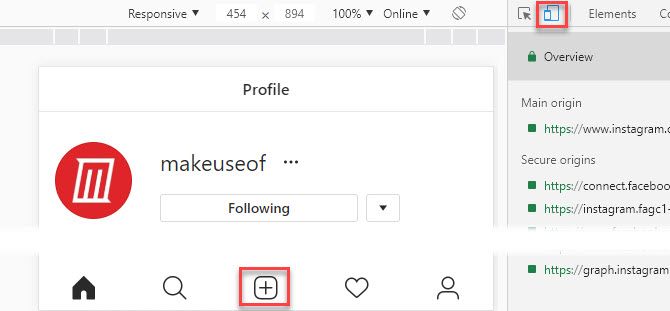
You’ll see an interface just like the mobile app, complete with click-and-drag functionality. Click the Plus icon at the bottom-center and you can add a photo from your PC. If you don’t see this icon, just refresh the page with F5 or navigate to a different page, and it will show up.
On the resulting screen, use Edit to tweak the photo and Filter to change its look. Click Next for the final steps of adding a location, tagging others, including hashtags, and posting a caption. Once you click Share, you’re good to go.

Emulate Android on Your PC
If neither of the above solutions work for you, you can go further and emulate Android on your computer for free. This allows you to access the true Instagram app and do everything with it as you would on your phone.
The easiest way to do this is using BlueStacks, though you have plenty of other ways to emulate Android in Windows 10. All you need to do is download BlueStacks, sign in with a Google account, download the Instagram app, and log into your Instagram account. Watch the video below for more details.
How to Post on Instagram From a Mac
The methods for posting to Instagram from your Mac are similar to the Windows steps, but we’ll share Mac-specific tips here.
Use the Mobile Instagram Website With Safari
We detailed how to change your user agent in Chrome above, which will also work on a Mac. If you’d prefer to use Safari, follow these instructions:
Open Safari’s Preferences window using Safari > Preferences or the shortcut Cmd + Comma. Switch to the Advanced tab and check the box at the bottom to Show Develop menu in menu bar.
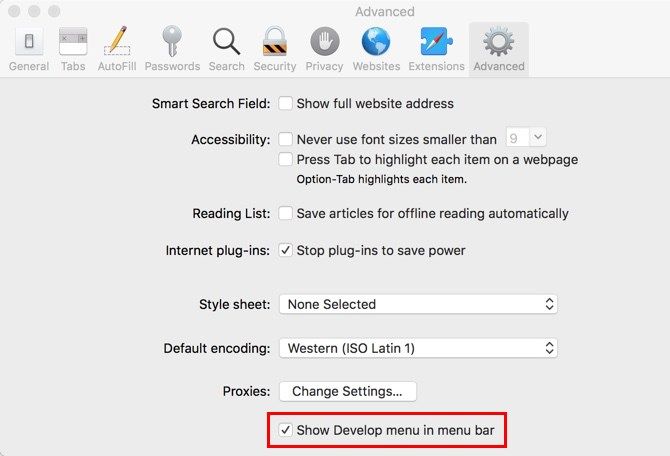
Next, browse to the Instagram website and sign in. Open the new Develop tab on the menu bar and choose User Agent > Safari—iOS xx—iPhone.
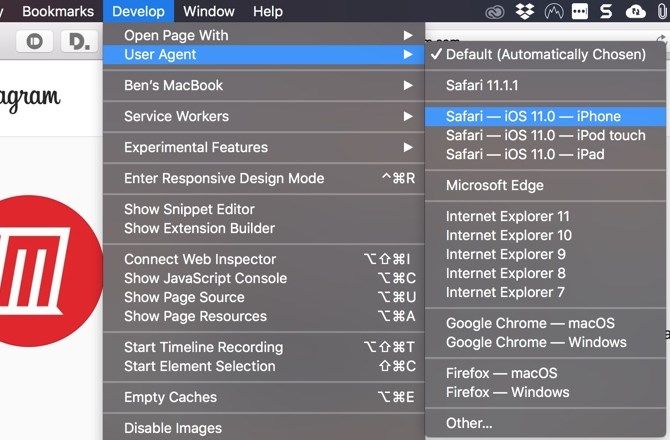
The page will refresh, and you’ll see the bar of icons along the bottom just like on the mobile app. Click the Plus icon in the center, and you’ll get a prompt to upload an image from your computer.
From there, just follow the steps to edit, add a filter if you wish, and post.

Emulate Android on Your Mac
You can emulate Android apps on macOS as easily as you can on Windows. It’s far easier to emulate Android than iOS, so you should give it a try even if you’re a newcomer to the platform.
Just like Windows, BlueStacks is the easiest way to emulate Android on your Mac. It’s as simple as downloading and installing BlueStacks, then searching for the Instagram app. If you don’t want to use BlueStacks, check out some other ways to run Android apps on macOS.
How to Post on Instagram From a Chromebook
If you use Chrome OS, you might wonder how to post on Instagram from your laptop. As it turns out, since you use Chrome as your web browser, you can follow the instructions in the “Use the Mobile Instagram Website in Chrome” section above. It works exactly the same way, allowing you to post a picture from your Chromebook’s storage.
Those with modern Chromebooks have the ability to download and use Android apps as well. If you prefer, you can download the Android Instagram app to post, similar to the Microsoft Store app on Windows 10.
Just open the Play Store and search for it like you would on your phone. From there, you can log into the mobile app and share your photos.
A Warning About Third-Party Instagram Apps
On both Windows and Mac, you’ll find several third-party apps that offer the ability to upload images to Instagram, among other features. These include Flume, Uplet, and others.
We recommend you avoid using these apps for two reasons.
First, if they don’t redirect you to the official Instagram login page, then you have no guarantee that they’re keeping your password secure. Entering your credentials into third-party apps could lead to your account being compromised. Apple has kicked several third-party Instagram apps off the App Store for violating this policy.
Finally solved the automatic following/unfollowing mystery on Instagram. Turns out a third party app was responsible (see pic). You can revoke their access by going onto your Instagram profile on a computer, then Settings (next to Edit Profile) > Authorized Apps > Revoke Access pic.twitter.com/FeZaFd7VwL
— Hannah Alexander Artwork (@HannahArtwork) June 27, 2018
Second, most of these apps require you to pay for the premium version to upload pictures (or more than a few in the free trial). This is a waste of money for something you can do for free.
Additionally, some apps include questionable features like “free likes,” which are spammy and against Instagram’s Community Guidelines. Even if you don’t abuse these features, Instagram could disable your account for using unauthorized apps like this.
Stick to one of the genuine methods above, and you shouldn’t experience any of these issues.
Post on Instagram From Your PC or Mac
Now, you should know how to post on Instagram from your PC or Mac. It seems impossible at first, but with a little bit of work, you can easily post your favorite pictures from your desktop. Whether you want to share art you’ve created or selfies taken with your webcam, you’re all set.
Before you post, you should learn how to be an Instagram master with our tips to help you stand out on Instagram and how to use Instagram Highlights.
Read the full article: How to Post on Instagram From a PC or Mac
Read Full Article
Netflix’s New Video Codec Uses Less Data

Netflix is using a new codec to stream video content to its mobile app. The codec, called AV1, offers improved compression efficiency over Netflix’s previous codecs. Which should help Netflix subscribers use less data while watching Netflix on their phones.
What Are Video Codecs?
Video codecs handle the compression and decompression of video. Which, in the age of streaming, is rather important. Codecs can affect both the quality of video delivered, and the amount of data used. Which is why Netflix takes this subject rather seriously.
Since 2016, Netflix has been using the VP9 codec to stream to mobile devices. In 2018, it launched shot-based encodes to further optimize its video streams. And now, in 2020, Netflix is starting to switch to the AV1 codec, which is even more efficient.
Netflix Upgrades Its Codecs
Netflix announced the switch to AV1 in a post on The Netflix Tech Blog. The company explains that “AV1 is a high performance, royalty-free video codec that provides 20% improved compression efficiency over our VP9† encodes.”
And it’s live! #AV1 streaming on Android for more efficient high quality video.
Thanks to industry collaboration in #AOM, our open source partners, and the #Netflix team chugging through early adopter challenges.https://t.co/cyCejhok29
— Anne Aaron (@AnneMargotAaron) February 6, 2020
AV1 is only being used for streams to the Netflix Android app at the moment. However, Netflix plans to roll out AV1 to all of its platforms over time. It’s merely starting with mobile because of users relying on spotty networks and limited data plans.
Android users who want to start streaming in AV1 should enable the Save Data feature in the Netflix app. Once enabled, “selected titles” will stream in AV1, allowing Netflix users to use less data while they’re watching their favorite movies and shows.
AV1 Is Becoming the Standard
While AV1 is only currently available to Netflix users on Android, the company is planning to expand its AV1 usage to more use cases and actively “working with device and chipset partners to extend this into hardware”. So it should become the standard over time.
The use of the AV1 codec means that you should use less data when watching Netflix on your smartphone. Which is obviously a good thing for anyone with a limited data plan. However, there are reasons why you shouldn’t watch movies on your smartphone.
Read the full article: Netflix’s New Video Codec Uses Less Data
Read Full Article
The 15 Best Amazon Alexa-Compatible Gadgets You Can Buy
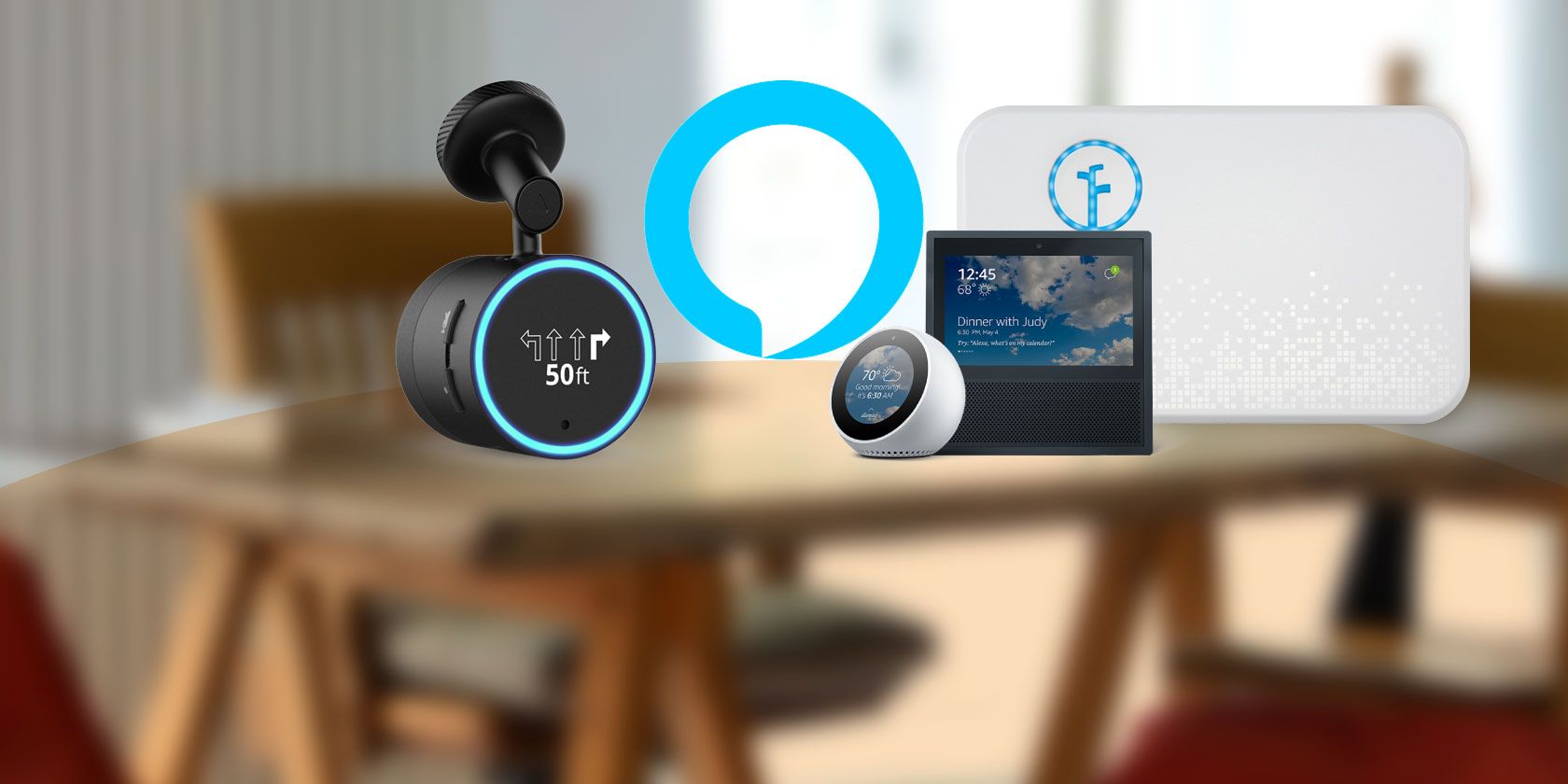
Amazon’s smart assistant, Alexa, continues to expand its reach. The personal assistant first launched in late 2014, and has come a long way from its humble beginnings with the original Amazon Echo smart speaker.
Alexa now powers a whole host of devices, and a simple voice command can accomplish some pretty surprising tasks with the right hardware. In this article, we’re highlighting the best Alexa-compatible gadgets that you should take a look at in 2020, including an Alexa-enabled coffee maker.
1. Roav Viva
Roav Viva Roav Viva Buy Now On Amazon $19.99Just say, “Alexa, directions to home.”
Alexa can go for a ride with Anker’s Roav Viva. Just plug it into a cigarette lighter in your car to get started. When on the go, a quick voice command will provide access to Alexa’s features, including calling, messaging, drop-in, and announcements. The adapter also features two USB ports so you can charge other devices.
2. Echo Show 5
Echo Show 5 Echo Show 5 Buy Now On Amazon $64.99Just say, “Alexa, wake me up at 6 a.m. to my rock playlist from Spotify.”
Good things come in small packages with the Echo Show 5. The smallest device in the Echo Show lineup features a 5.5-inch touchscreen and is perfect for a nightstand or another small spot in your home.
Even with the small screen, you can still take advantage of all the skills and functions of its larger cousins like video calling, watching movies, and viewing photos. With an eye on privacy, you can cover the camera lens with a built-in shutter and also turn the microphone off.
3. AmazonBasics Microwave
AmazonBasics Microwave AmazonBasics Microwave Buy Now On Amazon $59.99Just say, “Alexa, reheat one cup of coffee.”
A true Alexa-based smart home is moving closer to reality with the AmazonBasics Microwave. You’ll need another Amazon Echo device to control the microwave. But once that is set up, there are more than 24 voice-controllable presets to select from. You can also even specify a particular time for the 700-watt microwave to start cooking.
4. Rachio Smart Sprinkler Controller
Rachio Smart Sprinkler Controller Rachio Smart Sprinkler Controller Buy Now On Amazon $89.95Just say, “Alexa, tell Rachio to water the side yard for 2 minutes.”
Smart sprinkler controllers can save homeowners both water and money. Taking the place of a standard irrigation system controller, the smart version can provide better insight into when your lawn needs water and exactly how much.
One of the best choices on the market is the Rachio Smart Sprinkler Controller. While you can set an automatic schedule, Alexa can also help out. With a voice command, you can start and stop watering, turn on a rain delay, and more.
5. Hamilton Beach 49350 Coffee Maker
Hamilton Beach 49350 Coffee Maker Hamilton Beach 49350 Coffee Maker Buy Now On Amazon $89.99Just say, “Alexa, turn on my coffee maker.”
Alexa can make the morning just a bit easier Hamilton Beach 49350 Coffee Maker. Using any compatible Alexa device or the companion smartphone app, you can turn the coffee maker on or off and even change the brew strength.
With the Amazon app, you can set a morning routine on the Alexa coffee maker to have the brew set and ready to pot by a certain time.
6. Echo Wall Clock – Disney Mickey Mouse Edition
Echo Wall Clock - Disney Mickey Mouse Edition Echo Wall Clock - Disney Mickey Mouse Edition Buy Now On Amazon $41.99Just say, “Alexa, set a timer for 15 minutes.”
You can even get into the Disney spirit with an Alexa gadget. The Echo Wall Clock – Disney Mickey Mouse Edition provides a quick way to see how much time is left on a timer you’ve set with another Alexa device. Along with the analog time, you can see one or multiple timers on the 60 LEDs around the outer edge of the device.
7. Sonos One
Sonos One Sonos One Buy Now On Amazon $199.00Just say, “Alexa, play Beastie Boys from Spotify.”
If sound quality is your top priority when looking for a smart speaker with Alexa built-in, take a look at the Sonos One. The company is well-known for delivering top-quality audio, and the Sonos One brings Alexa into the mix.
You can accomplish almost everything possible with an Echo device, including playing music, controlling smart home devices, and interacting with skills. You even get a choice between a black or white version to match your home decor.
8. Sengled Element Classic A19 Starter Kit
Sengled Smart LED Soft White A19 Starter Kit Sengled Smart LED Soft White A19 Starter Kit Buy Now On Amazon $29.98Just say, “Alexa, turn the bedroom light to 50 percent brightness.”
Smart lighting is one of the simplest ways to add technology to a home. While the Sengled Element Classic A19 requires a wireless hub, the lights are substantially more affordable than the popular Philips Hue line of products.
The starter kit comes with two dimmable A19 LED soft white bulbs. Using Alexa, you can turn the bulbs on and off, along with changing the brightness level.
9. Anova Culinary Sous Vide Precision Cooker
Anova Culinary Sous Vide Precision Cooker Anova Culinary Sous Vide Precision Cooker Buy Now On Amazon $188.80Just say, “Alexa, ask Anova to cook a steak.”
A kitchen device to test your culinary prowess, the Anova Culinary Sous Vide Precision Cooker provides a great way for home cooks to try out the popular cooking method. If you’re unaware, sous vide means food sealed in a bag cooked in a water bath at a consistent temperature. You can cook a surprising amount of items using the method, everything from steaks to soups and even desserts.
With built-in Wi-Fi and Bluetooth, the cooker can be controlled with a smartphone app and also with Alexa. Using Alexa, you can heat water to a specific temperature and cook a wide variety of products, too.
10. Ring Indoor Camera
Ring Indoor Camera Ring Indoor Camera Buy Now On Amazon $59.99Just say, “Alexa, show me the living room camera.”
The Ring Indoor Camera is a breeze to set up. Just plug it into an outlet and then connect your Wi-Fi. You can see the camera feed from any Echo Show device or Ring app. You can hear what’s happening and even talk to anyone with the camera’s built-in microphone.
11. Echo Buds
Echo Buds Echo Buds Buy Now On Amazon $89.99Just say, “Alexa, where is the nearest pizza restaurant?”
Take Alexa anywhere with the Echo Buds. The completely wireless earbuds feature Bose Active Noise Reduction and are perfect for the gym or a run with a sweat-proof design. There’s no need to press a button to interact with your smart assistant—just say “Alexa” to get started.
The earbuds work in tandem with the Alexa app so you can do things like take calls, listen to music, or get directions. The battery provides up to five hours of music playback on a single charge and up to 20 hours with the included charging case.
12. Kasa Smart WiFi Plug
Kasa Smart WiFi Plug Kasa Smart WiFi Plug Buy Now On Amazon $16.50Just say, “Alexa, turn off the living room lights.”
Smart plugs are a great way to get started with smart home technology. The Kasa Smart WiFi Plug is an inexpensive entry point, too. You can control the outlet with Alexa or while on-the-go using the companion Kasa app. Thanks to a minimal design, the device won’t block another wall outlet, allowing you to place two plugs in one outlet.
13. Fire TV Cube
Amazon Fire TV Cube Amazon Fire TV Cube Buy Now On Amazon $119.99Just say, “Alexa, turn on the TV and tune to ESPN.”
Remotes are a thing of the past when using the Fire TV Cube in your living room. You can ask Alexa to turn on your TV and soundbar while even starting a specific program. The cube is capable of streaming 4K content at 60fps along with HDR and Dolby Atmos audio. It can also access popular streaming services like Netflix and Amazon’s own Prime Video.
14. Echo Flex
Echo Flex Echo Flex Buy Now On Amazon $19.99Just say, “Alexa, unlock the front door.”
All you need is a free electrical outlet to bring Alexa into more places in your home with the Echo Flex. The small, plug-in Alexa gadget allows you to interact with the voice assistant to activate skills and features.
There is also a built-in USB port that can be used to juice up a smartphone or other device. You can also add an optional smart motion sensor or smart night light. A built-in 3.5mm AUX port allows you to plug in a larger speaker for better sound quality.
15. ecobee SmartThermostat
ecobee Smart Thermostat ecobee Smart Thermostat Buy Now On Amazon $244.00Just say, “Alexa, turn the thermostat to 70 degrees.”
The ecobee SmartThermostat is currently one of the best Alexa smart home devices on the market; the device is a double threat. You can control your home’s heating and air conditioning with a simple Alexa command on any compatible device. The thermostat also has Alexa controls built-in, meaning it can act as a standalone smart home device like the Amazon Echo Dot, too.
A Growing World of Alexa-Compatible Devices
Amazon’s Alexa continues to gain traction and partner with more interesting and unique devices. Even though the voice control assistant is far from perfect, the vast number of uses are definitely exciting and point to a continuing bright future for Amazon’s ecosystem.
Alexa-compatible devices can do much more than just play music or tell you the weather outside, though. Take a look at these great ways to use an Amazon Echo and Alexa to be more productive.
Read the full article: The 15 Best Amazon Alexa-Compatible Gadgets You Can Buy
Read Full Article
Fitbit vs. Garmin: Fitness Watches Compared
Fitbit and Garmin are the two biggest names in the fitness tracker industry. That said, it’s sometimes hard to distinguish the differences between each company’s trackers. Both have a solid lineup of devices that serve specific purposes at varying price points.
If you’re looking for a Fitbit and Garmin watch comparison, you’re in the right place. We’ll provide you with a crucial overview of the Fitbit vs. Garmin debate that can solve all of your shopping woes.
Fitbit vs. Garmin: Budget Fitness Trackers
Budget fitness trackers are typically the most basic of the trackers, but that doesn’t mean they’re not as helpful as pricier models. Fitness trackers on the cheaper side are under $100 and have only the most essential features to keep you aware of your activity level. These sleek, affordable fitness trackers will still get the job done.
Fitbit Inspire
Fitbit Inspire Fitbit Inspire Buy Now On Amazon $59.95For a budget fitness tracker, the Fitbit Inspire is quite impressive. It’ll keep track of your daily fitness stats, such as your total steps, distance traveled, your active time, and how many calories you burned. Not to mention that it automatically keeps a record of bike activity, runs, and swimming sessions.
The battery lasts five days before you have to charge it. You can also monitor your sleep and set alarms that wake you up with a gentle vibration on your wrist.
Garmin Vivofit 4
Garmin Vivofit 4 Garmin Vivofit 4 Buy Now On Amazon $78.78The Garmin Vivofit 4 provides basic fitness tracking—it records your steps, burned calories, sleep patterns, and distance moved. With MoveIQ, the Garmin Vivofit 4 recognizes and tracks when you’re running, biking, swimming, or using gym equipment.
As you use the Garmin Vivofit 4, it’ll get to know your activity levels. This helps it provide daily step goals tailored to you. Unlike the Fitbit Inspire, you don’t even need to charge the Garmin Vivofit 4. This tracker’s battery lasts over a full year before it needs a replacement.
Fitbit vs. Garmin: Mid-Range Fitness Trackers
Mid-range fitness trackers have a slightly higher price tag than the budget trackers, but they come with some extra features. If you’re serious about tracking your fitness (but don’t want to pay the price of higher-end models), you should consider buying a mid-range tracker. Here’s a quick rundown of reasonably-priced Garmin running watches vs. Fitbit trackers.
Fitbit Charge 3
Fitbit Charge 3 Fitbit Charge 3 Buy Now On Amazon $99.95The Fitbit Charge 3 offers a more detailed approach to your activity level. This fitness tracker keeps track of your heart rate, a feature that cheaper trackers lack. In addition to providing you with total calories burned, the Fitbit Charge 3 records your exercise with 15 different types of activities, and even allows you to practice deep-breathing exercises.
The device’s screen displays any calls or texts that you receive on your phone. It also offers more in-depth sleep tracking—the Fitbit Charge 3 informs you of your time spent in different stages of sleep. It lasts seven days without charging, so you’ll spend less time charging and more time active.
Garmin Vivosmart 4
Garmin Vivosmart 4 Garmin Vivosmart 4 Buy Now On Amazon $97.12In terms of this Garmin watch vs. the Fitbit Charge 3, the Garmin Vivosmart 4 is slightly more expensive. It comes equipped with a Pulse Ox sensor, along with a sleep monitoring tool that can detect REM sleep.
You can also expect this tracker to monitor your stress levels, measure your VO2 Max level, find your heart rate, and even calculate your body’s energy level. If you’re feeling stressed, make sure to use the device’s deep breathing timer.
In addition to all of these great features, it has basic fitness tracking features such as step and workout tracking. Like the Fitbit Charge 3, the Vivosmart displays any notifications from your mobile device and lasts seven days on a full charge.
Fitbit vs. Garmin: High-End Fitness Trackers
When you take a step up from mid-range fitness trackers to high-end, they start to look more like smartwatches. Wondering whether to go with a Garmin GPS watch vs. a Fitbit? Both brand’s high-end models may seem very similar, but they each have some distinct features.
Fitbit Versa 2
Fitbit Versa 2 Fitbit Versa 2 Buy Now On Amazon $149.95When you strap on the Fitbit Versa 2, it’ll start tracking your heart rate, distance traveled, flights of stairs climbed, and active minutes. However, that’s only a few of its features. The Fitbit Versa 2 even integrates with Amazon Alexa so you can adjust your smart home devices with your voice. Not to mention that you can use your Spotify, Pandora, and Deezer to play your favorite songs while working out.
Since the Versa 2 connects to your phone, you can expect to receive alerts for texts, calendar events, and calls. The Versa 2 also gives you a better idea of your sleep quality by analyzing your REM sleep, time asleep, and restlessness. Given the feature list, this fitness watch runs out of power faster than the other trackers on this list—it can last up to six days without charging.
Garmin Forerunner 45
Garmin Forerunner 45 Garmin Forerunner 45 Buy Now On AmazonLike most fitness trackers, the Garmin Forerunner 45 keeps track of your daily steps, activity level, and burned calories. It also allows you to stay updated on any notifications you receive on your phone, whether it’s a text or call. You can use the Forerunner 45 to play music as well. Plus, if you ever experience an emergency while wearing the watch, the Forerunner 45 automatically detects it and notifies your emergency contact of your location.
Something that makes the Forerunner 45 stand out is its compatibility with the Garmin Coach training plan. You’ll have to pay for this feature, but it can provide you with some guidance for your exercise routine. When the Forerunner 45 is in GPS mode, its charge lasts only 14 hours; without GPS mode, it’ll last up to seven days.
Which Is Better: Fitbit or Garmin?
Depending on your needs, you may feel that the Fitbit versus Garmin debate is settled. If you don’t mind spending a little more money on a tracker with extra features, you’ll want to check out Garmin fitness trackers.
Otherwise, Fitbit makes a reliable choice for a slightly more affordable price. All in all, you want a fitness tracker that can cover all the basics—the more expensive models will likely have features that you don’t always need.
Still unsure on which fitness watch to buy? Maybe our detailed review of the Fitbit Charge 3 can help you make your decision.
Read the full article: Fitbit vs. Garmin: Fitness Watches Compared
Read Full Article
